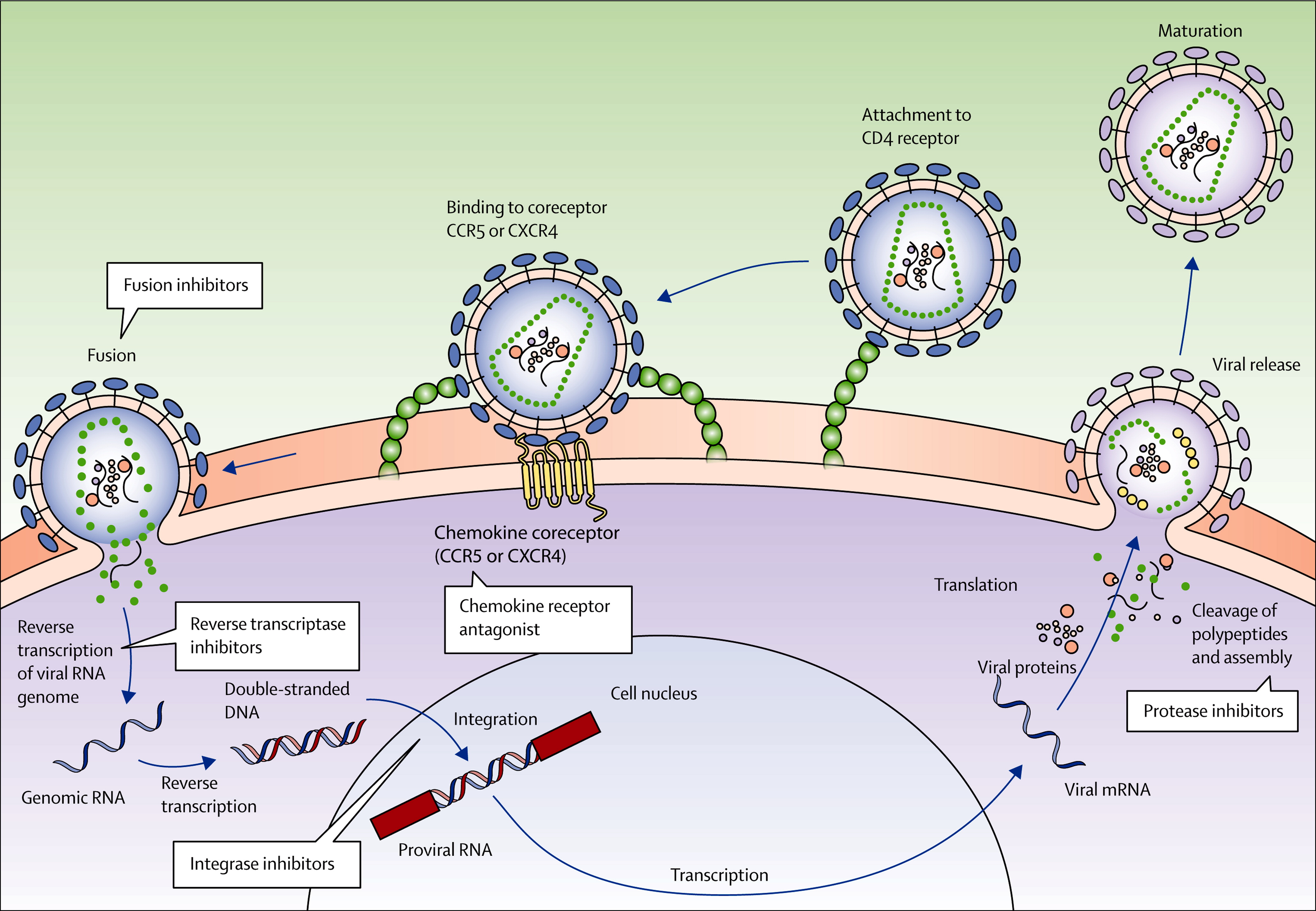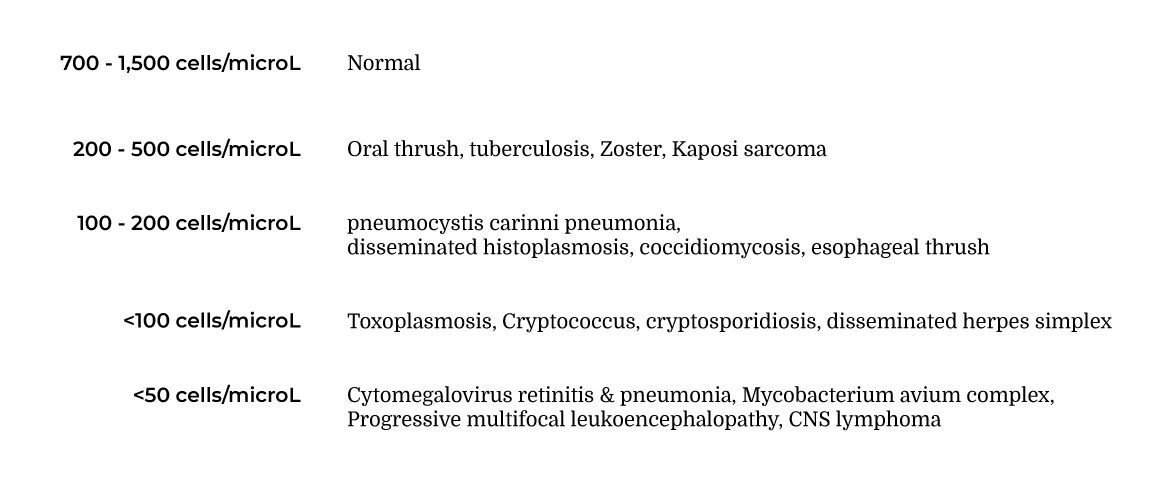Opportunistic Infections and Clinical Monitoring in Acquired Immune Deficiency Syndrome (AIDS)
In 2016, approximately 36.7 million people are infected with the human immunodeficiency virus (HIV). When not well controlled or suppressed, HIV can cause AIDS. The HIV virus attacks a subset of T lymphocytes called CD4 cells and over time can decrease them number of CD4 cells in the human body. This is important to understand because these CD4 cells are an important part of the human immune system, and as the absolute amount of these cells decrease, the person becomes more susceptible to developing opportunistic infections and even certain types of cancers.

Etiology
HIV can be contracted in many different ways, and is especially variable depending on the geographic location. For example. In the early days of the HIV epidemic in the United States, the HIV infection rate was highest in men who had sex with men (MSM) and in people who used intravenous drugs. In more recent data, the most common risk factors are MSM and heterosexual intercourse, while infection rate from IV drug use has deceased. In developing countries, such as Africa, Asia, and Latin America, the highest rate of infection occurs from heterosexual transmission.
After people become infected with HIV, you can expect their CD4 cells to decreased 50-100 microL/year given they have not been treated. This usually translates to a 5 - 10 year runway for a patient before they start having the first symptoms of AIDS.
Monitoring HIV/AIDS
CD4 Cell Count
Because HIV infects CD4 cells, it makes sense that monitoring a CD4 cell count is a way to predict the risk of opportunistic infections in a patient, but also to determine the success of treatment and medication compliance.

Viral Load Monitoring
Monitoring patient by quantifying the amount of HIV in the blood, or viral load, is the best way to monitor patients' response to treatment for HIV with antiretroviral medications. When treatment is started, the goal for these patients is to have their viral load to be undetectable by current laboratory measurement. Prognosis is directly correlated with viral load. So the higher the viral load, the faster you can expect that patient's CD4 count to decrease and as a result the more complications from opportunistic infections.
